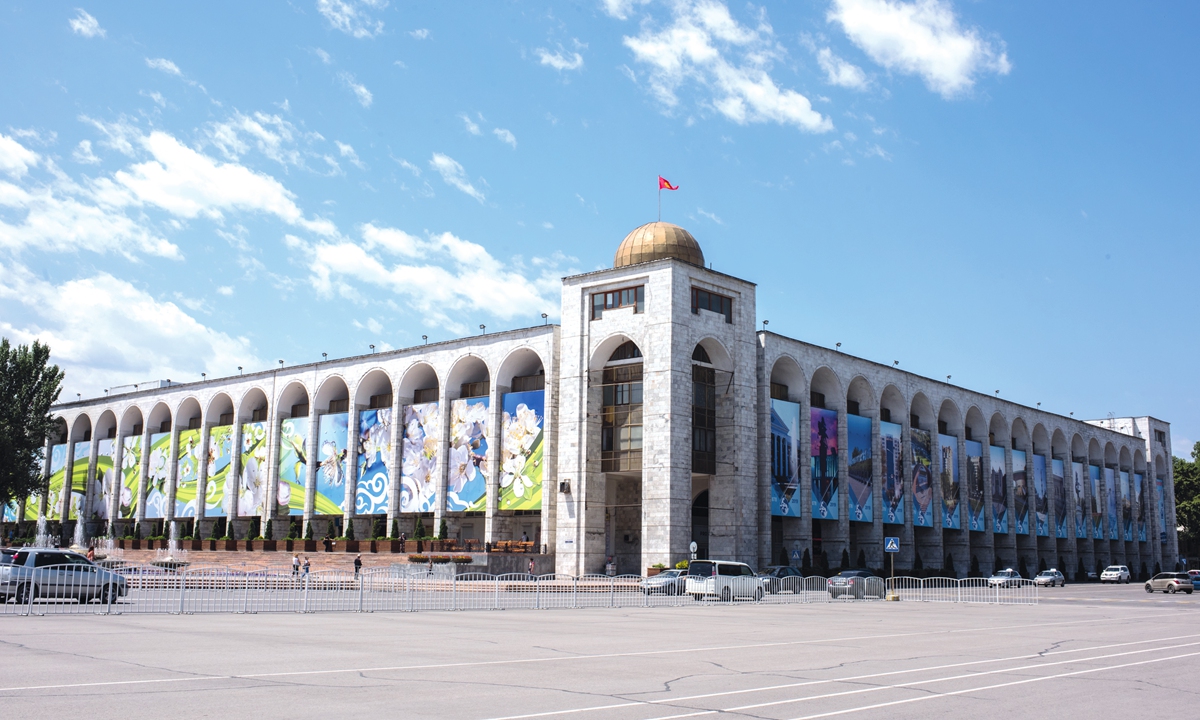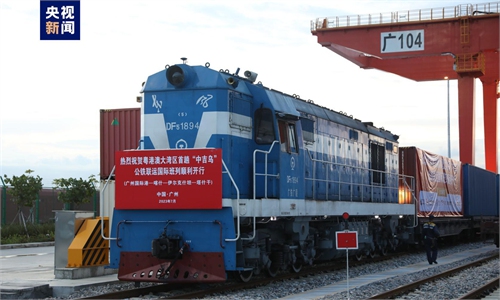Kyrgyzstan considers increasing Chinese yuan’s use in rising trade to cut reliance on US dollar: deputy PM

Street scene in Bishkek, capital of Kyrgyzstan Photo: VCG
On Tuesday morning, outside a hotel in northeastern Beijing, a motorcade consisting of cars with diplomatic plates and police cars packed the parking lot. In the lobby, a big blue poster with the Chinese and Kyrgyz flags reads: "Deputy Prime Minister of Kyrgyzstan's meeting with representatives of Chinese companies." Inside the ballroom, dozens of people in business attire gathered, as a succession of Kyrgyz officials step onto the stage to promote various investment opportunities.
"I really hope our meeting today can result in new perspectives and new ideas, bring new opportunities for future cooperation, and become a huge driving force for consolidating the strategic partnership between our two countries," Bakyt Torobaev, deputy chairman of the Cabinet of Ministers of Kyrgyzstan, said in his speech, after highlighting potential for investment cooperation in various areas such as resources, energy and e-commerce.
Following the presentations, several memoranda of understanding were exchanged. Then the crowd broke into different groups to meet with Kyrgyz officials in charge of different sectors. "Where is the agricultural minister?" one Chinese businessmen asked. "Where is the room for the energy sector?" another asked.
Similar scene have become ubiquitous across many cities in China since the beginning of this year, as foreign officials and businesses from around the world have flocked to China to attended all types of trade events and seek cooperation opportunities. The increase in the number delegations from Central Asian countries like Kyrgyzstan is particularly standing out since the first-ever China-Central Asia Summit in Xi'an, Northwest China's Shaanxi in May and as the Belt and Road Initiative (BRI) celebrates its 10th anniversary this year, according to Jiang Yun, general-secretary of the China Overseas Development Association, host of Tuesday's event.
"Since the China-Central Asia Summit in May, the five central Asian countries all dispatched high-level delegations to China," Jiang told the Global Times on Tuesday, listing a series of similar events for delegations from Kazakhstan and future plans for Uzbekistan and Tajikistan.
While the global economy is facing a severe downturn, Central Asian countries are full of vitality and optimism, as they position their countries as a crucial part in the joint construction of the BRI and connecting the East and the West, as they did during the ancient Silk Road. Officials are also keen to point out a variety of advantages the region holds, including geographical location, improving business environment and growing policy support.
"We provide all conveniences for Chinese enterprises. We hope that Chinese goods can be sold to other countries through Kyrgyzstan," Torobaev told the Global Times in an exclusive interview on the sidelines of the event on Tuesday, noting that as part of the EU's Generalised Scheme of Preferences Plus, Kyrgyzstan can export 6,200 types of products to the EU under a zero tariff framework. "We hope to conduct closer cooperation with China in various areas."
Amid closer bilateral ties, China and Kyrgyzstan have in recent years seen robust rise in bilateral trade and investment. In 2022, China's trade with Kyrgyzstan reached $15.5 billion, a year-on-year increase of 105.6 percent, according to Chinese official data. In 2022, the country saw a total of $1 billion in foreign direct investment, with 22 percent of it coming from China, according to an official from Kyrgyzstan's investment authority on Tuesday.
Amid the rapidly rising bilateral trade, the Kyrgyz government is considering increasing the proportion of the Chinese yuan used in foreign trade to reduce reliance on the US dollar, Torobaev said on Tuesday.
Rising trade and investment is seen between China and other Central Asian countries in recent years. In 2022, China's trade with the five Central Asian countries surged by 40 percent year-on-year to $70.2 billion, despite a slump in global trade, according to Chinese official data.
That might be just the start of what could be greater trade and investment cooperation between China and Central Asia, as they are natural partners with a history dating back to thousands of years, Vladimir Norov, former secretary general of the Shanghai Cooperation Organization and former foreign minister of Uzbekistan, told the Global in a recent interview.
Norov said that the China-Central Asia Summit has also put renewed emphasis on China-Central Asia cooperation in many areas, including joint construction of the BRI. "There is more focus on the BRI implementation because all Central Asian countries are supporting this initiative," he said, adding that there is growing room for cooperation in the digital economy and industrialization in Central Asia.
Jiang said that many Chinese companies have also shown great interests in a long list of areas in Central Asia, including new energy, agriculture and cross-border e-commerce. And with the third Belt and Road Forum set to kick off in Beijing in October, there will be even more trade and investment promotion activities like that of Tuesday with delegations from Central Asian countries, Jiang said. "There will definitely be even more activities next month with the forum," he said.



